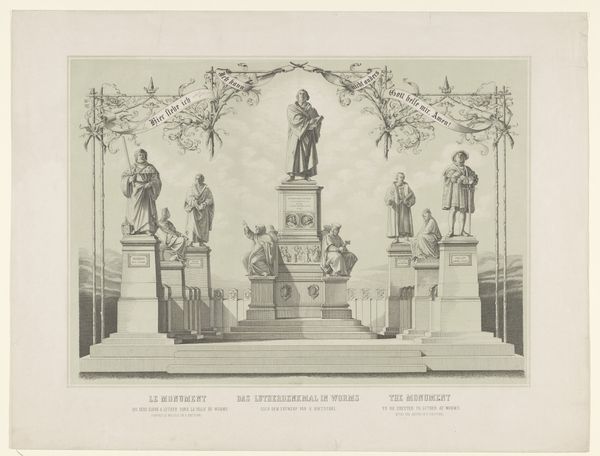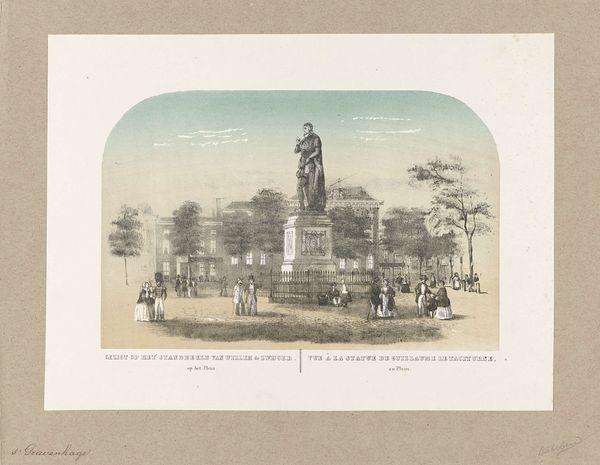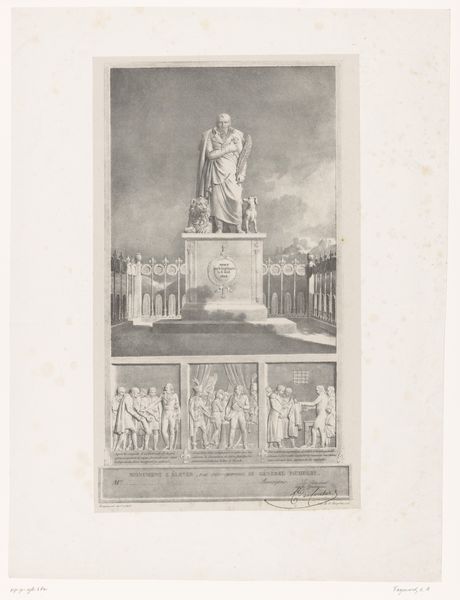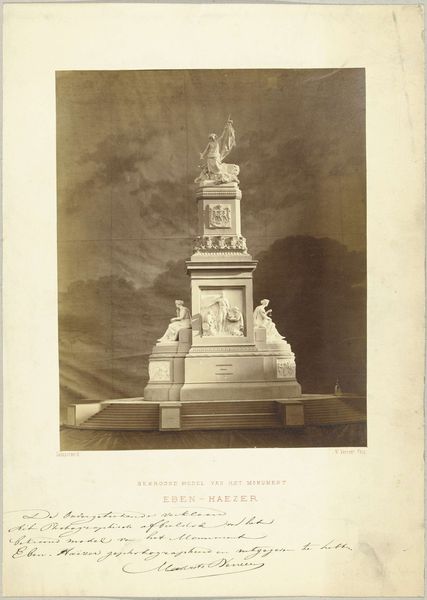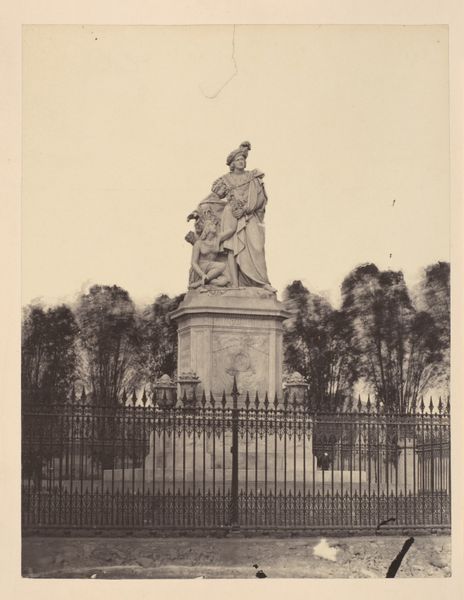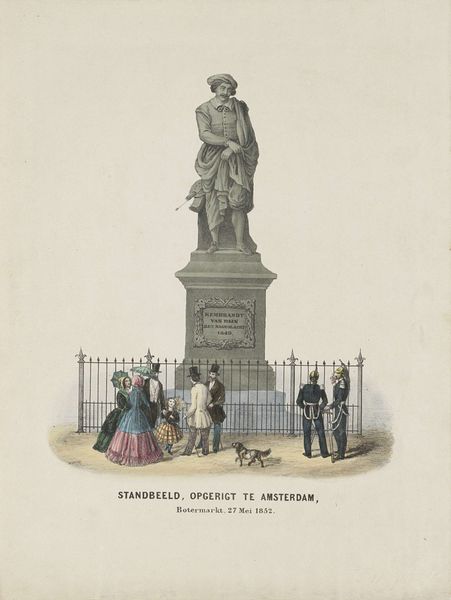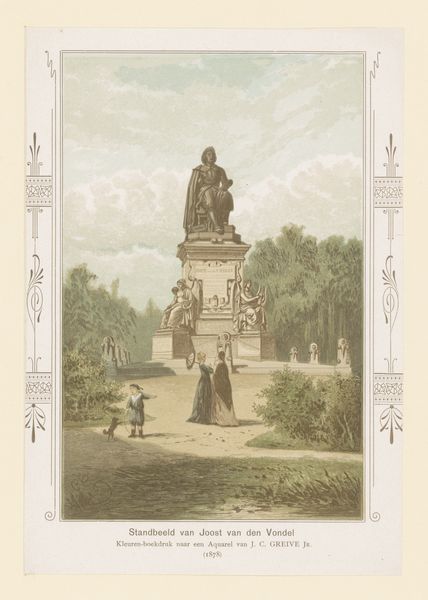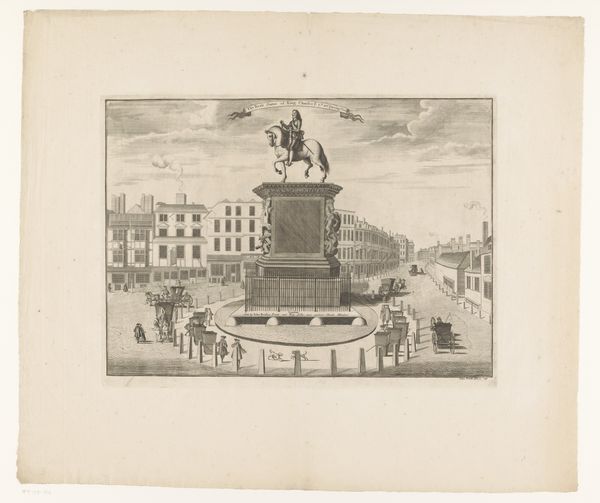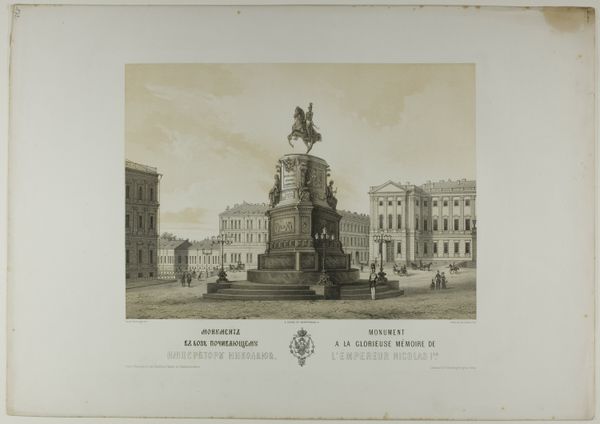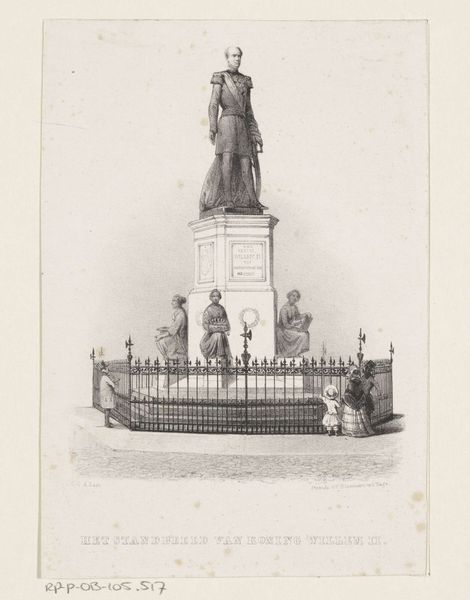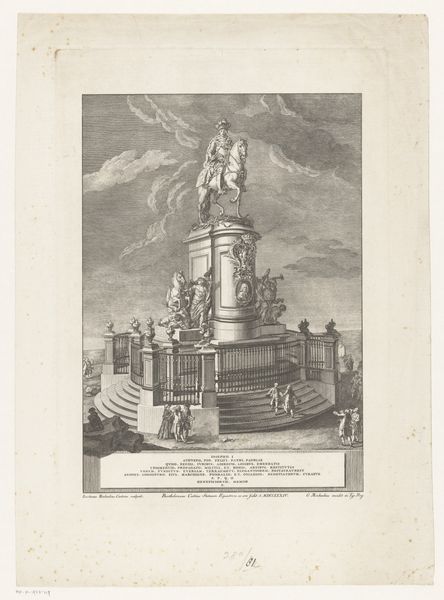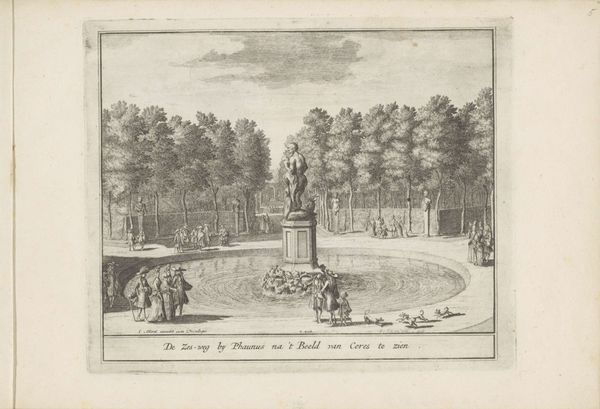
Proposed Colossal Statue of George Washington for the City of New York 1845
0:00
0:00
drawing, print, sculpture, pencil
#
portrait
#
drawing
#
neoclacissism
#
narrative-art
# print
#
pencil sketch
#
landscape
#
classical-realism
#
perspective
#
charcoal drawing
#
figuration
#
classicism
#
sculpture
#
pencil
#
cityscape
#
academic-art
Dimensions: image: 16 1/4 x 13 3/8 in. (41.3 x 34 cm) sheet: 21 7/8 x 17 1/2 in. (55.5 x 44.4 cm)
Copyright: Public Domain
Curator: Here we have "Proposed Colossal Statue of George Washington for the City of New York," created by G. Thomas in 1845. This print drawing is currently held at the Metropolitan Museum of Art. It reflects a specific aspiration for civic representation during that period. Editor: My first thought is, imagine stumbling upon that colossal thing! It’s grandiose, of course, but there's also something a little intimidating about the scale and how it dwarfs everything around it, including the people in the foreground. Gives you that whole "history is watching" vibe. Curator: Exactly. The proposal reflects the values and aesthetics of its time, heavily influenced by neoclassicism. You can see that in the idealized form of Washington and the classical architectural elements of the base. Consider the cultural context; erecting such a monument aimed to solidify Washington's legacy and reinforce specific national narratives about leadership, valor, and the foundation of American identity. Editor: And it’s a carefully constructed stage, isn't it? All those people milling about – they're part of the show, unintentionally reinforcing the power dynamic. You've got the godlike figure of Washington overlooking his adoring public. I wonder if they were really adoring, or if it’s all projection and wishful thinking on the artist’s part? Curator: It’s crucial to remember that these images, even as proposals, perform a kind of cultural work. They project power, construct ideals, and shape public memory. Examining who is included, how they are depicted, and who is excluded reveals the inherent biases and power structures operating during the 19th century. The cityscape here operates almost like a carefully constructed background for an official portrait. Editor: You know, I'm almost glad they didn't build it. As striking as it is on paper, I think that the impact, literally and figuratively, would probably overwhelm the citizens on their daily commute. It is great that it sparks these conversations now, though! Curator: Indeed. It serves as a powerful reminder that even unbuilt monuments have a story to tell about the cultural values of the society that envisioned them. Editor: A potent reminder, too, that what we choose to memorialize reflects—and shapes—who we think we are.
Comments
No comments
Be the first to comment and join the conversation on the ultimate creative platform.
